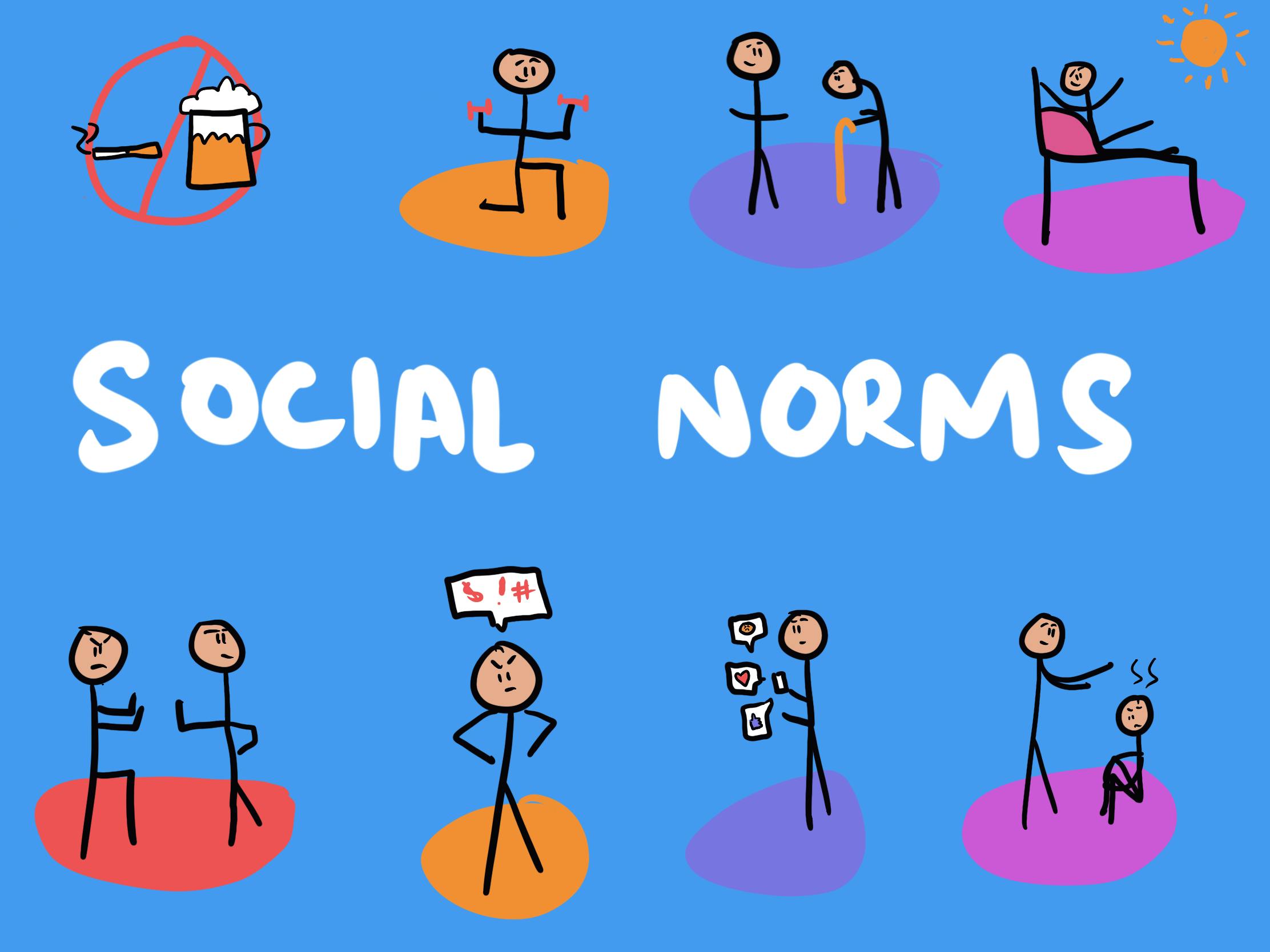Why do we follow the behavior of others?
Social Norms
, explained.What are Social Norms?
Social norms are collectively held beliefs about what kind of behavior is appropriate in a given situation. They range from specific customs, like the Western tradition of shaking hands when you meet someone, to more general rules that govern behavior and influence our understanding of other people.

Where this bias occurs
Social norms are all around us. We’re susceptible to them in every setting, and they can even influence us to do things that we normally wouldn’t. Let’s say you’re out walking, drinking a take-out coffee as you go. The neighborhood you’re in seems fairly vacant, and there’s a lot of litter on the ground. When you finish your coffee, you toss it onto the sidewalk instead of finding a garbage can, because clearly, that’s what everybody else does.
Most of the time, social norms dictate our individual behaviors, interactions with other people, and daily routines. They’re like a set of rules or expectations that shape how we dress, speak, show respect, and even how we express emotions. These norms are often so ingrained that we follow them automatically, without consciously thinking about them. In fact, social norms are often a very good predictor of behavior, particularly in unfamiliar or uncertain situations.
Social norms are also highly contextual. What’s considered normal in one culture may seem completely alien in another. Although related, social norms are not identical to cultural norms—they are influenced by them as a contextual factor. For example, in many East Asian cultures, it's customary to remove your shoes before entering someone’s home, as a sign of respect and cleanliness. In contrast, someone from a Western country unfamiliar with this norm might accidentally keep their shoes on indoors. They don’t do this out of disrespect, but because the social norms they are accustomed to are different. Social norms, therefore, are learned through cultural exposure and socialization (known as social learning)—not a set of rules we’re naturally born with.
According to psychologists Robert Cialdini and colleagues, here are two types of social norms:1
Subjective norms (sometimes also called descriptive norms) refer to the perceived social pressure an individual feels to perform or not perform a certain behavior, based on what they believe people around them expect. For example, you may feel pressured to recycle because everyone on your street does.
Injunctive norms describe what people believe is approved or disapproved by others. That is, what society thinks you should do. For example, a sign that says “Don’t litter—keep your community clean” encourages behavior that aligns with shared social values. In this case, littering would go against the social norm and be disapproved of by others.
Social norms can also be distinguished between those that have negative (i.e., potentially harmful) impacts and those that have positive impacts on people’s lives and society.2 Harmful norms can perpetuate inequality, discrimination, or risky behaviors, such as norms that normalize violence against women or discourage males from seeking mental health support. In contrast, positive norms encourage prosocial or individual actions, like volunteering, recycling, or regularly exercising.














